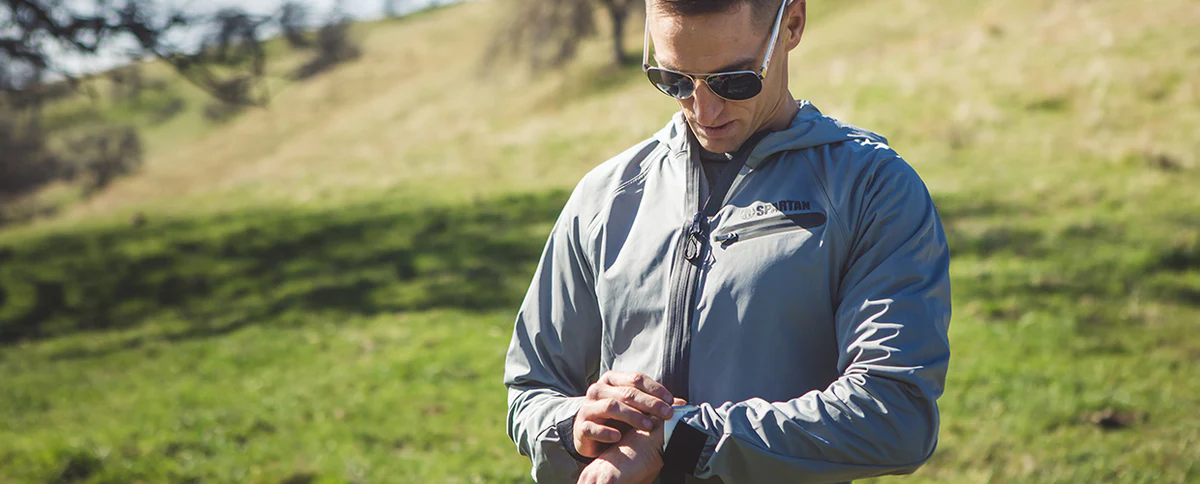Is It Worth It? Tracking HRV (How to Use It + 3 Tips to Max This Metric)

Spartans will do what it takes to get where they want to go but let’s not mess with the BS. In this Spartan Fit franchise, we’ll talk to experts to find out what’s worth your time, and what’s not. First up: Heart rate variability.
Over the past few years, there’s been lots of buzz around heart rate variability (HRV). But, it’s by no means a newly-discovered training metric. Studies involving hooking people up to EKGs to measure HRV have been around for decades. Historically, it has been used as a way to assess cardiovascular and metabolic issues and illnesses. More recently, it has been applied to fitness to amplify training programs for serious athletes. In fact, a review in Experimental and Therapeutic Medicine asserts that it’s one of the most useful tools for optimizing performance.
The uptick in interest in the fit set may in part be due to an influx of easy-to-use devices and apps that allow lay people outside of a lab (without access to EKG equipment) to track their own data, according to Jeff Godin, Ph.D., CSCS, head of fitness education for Spartan.
Here's what it is, how to use it, and three things every athlete should know about heart rate variability and its impact on performance.
Heart Rate Variability — The Basics
What is HRV?
Simply put, HRV is the variation in time in between heart beats. For example, if your heart beats 60 times per minute and there is no variability, the time between beats would be exactly one second.
But that’s not usually the case: “There is constant input from the parasympathetic nervous system telling the heart to slow down, and input from the sympathetic nervous system telling the heart to speed up,” Godin explains. “It’s a finely-tuned orchestra where the nervous system is dialing in the performance of the heart.”
Normally, this results in small variations in the time between beats. So instead of the heart beating every second, it would beat in intervals like 1.1 seconds, .8 seconds, 1.0 second, .9 seconds, 1.2 seconds, etc.
What HRV Can Tell You
Since everything from heat, humidity, dehydration, caffeine, sleep, and physical and mental stress can impact it, the HRV metric can tell you how recovered you are compared to how stressed you are. Therefore, it can be an indicator as to whether you should go hard or pull back on today’s workout. We're all about exertion, but doing it in a smart way that won't set you back. That's where HRV comes in.
How HRV Works
You measure it in the morning using a chest strap or wrist wearable that specifically measures RR intervals (the milliseconds in between heart beats). Anything else (like holding your finger up to your phone’s camera) Godin says, probably isn’t very reliable.
“The higher the number, the better because when there’s that little bit of tug-of-war between the two nervous systems, that’s when we know when we’re in the optimal state,” Godin explains. “When one is dominating over the other (making your HRV lower than usual) that’s not good.”
If you notice your HRV is lower than normal, it might be a sign that you should go easy on yourself during your workout; if it’s higher than normal, consider ramping things up.
3 Things Every Athlete Should Know About Heart Rate Variability

1. There is no “good” number.
It’s super unique to the individual so pay attention to whether yours is “high” or “low” compared to your average.
2. It doesn’t work in isolation.
You should factor in resting heart rate, perceived exertion during workouts, and work output during training before making a decision around modifying. “For example, if my morning HRV was low (poor) and then I started my workout and noticed that my exercise heart rate was higher or lower than it would normally be during that session, it would be a stronger indication that recovery was needed, than if either was used by itself,” says Godin.
3. Be consistent with your measurements.
If one morning you measure it as soon as you get up and then the next morning you do it after breakfast, you’re not going to get a steady baseline. “Eating and the process of digestion activates the nervous system and sways it in one way or the other,” Godin explains.
Is It Worth It? Tracking HRV
Yes. “It helps athletes really be mindful of their training rather than blindly powering through workouts,” Godin sums up. “It’s for the person who loves data and wants to take an analytical approach to their training, whether they are a novice or an elite athlete.”











